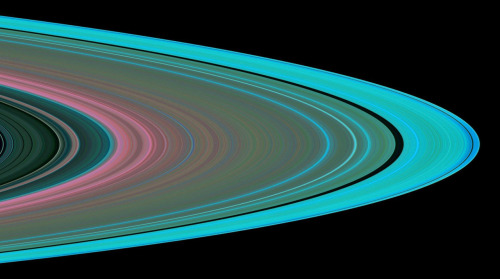For More Posts Like These, Go To @mypsychology









For more posts like these, go to @mypsychology
More Posts from Science-is-magical and Others
Galaxies: Types and morphology
A galaxy is a gravitationally bound system of stars, stellar remnants, interstellar gas, dust, and dark matter. Galaxies range in size from dwarfs with just a few hundred million (108) stars to giants with one hundred trillion (1014) stars, each orbiting its galaxy’s center of mass.

Galaxies come in three main types: ellipticals, spirals, and irregulars. A slightly more extensive description of galaxy types based on their appearance is given by the Hubble sequence.

Since the Hubble sequence is entirely based upon visual morphological type (shape), it may miss certain important characteristics of galaxies such as star formation rate in starburst galaxies and activity in the cores of active galaxies.
Ellipticals

The Hubble classification system rates elliptical galaxies on the basis of their ellipticity, ranging from E0, being nearly spherical, up to E7, which is highly elongated. These galaxies have an ellipsoidal profile, giving them an elliptical appearance regardless of the viewing angle. Their appearance shows little structure and they typically have relatively little interstellar matter. Consequently, these galaxies also have a low portion of open clusters and a reduced rate of new star formation. Instead they are dominated by generally older, more evolved stars that are orbiting the common center of gravity in random directions.
Spirals

Spiral galaxies resemble spiraling pinwheels. Though the stars and other visible material contained in such a galaxy lie mostly on a plane, the majority of mass in spiral galaxies exists in a roughly spherical halo of dark matter that extends beyond the visible component, as demonstrated by the universal rotation curve concept.
Spiral galaxies consist of a rotating disk of stars and interstellar medium, along with a central bulge of generally older stars. Extending outward from the bulge are relatively bright arms. In the Hubble classification scheme, spiral galaxies are listed as type S, followed by a letter (a, b, or c) that indicates the degree of tightness of the spiral arms and the size of the central bulge.
Barred spiral galaxy

A majority of spiral galaxies, including our own Milky Way galaxy, have a linear, bar-shaped band of stars that extends outward to either side of the core, then merges into the spiral arm structure. In the Hubble classification scheme, these are designated by an SB, followed by a lower-case letter (a, b or c) that indicates the form of the spiral arms (in the same manner as the categorization of normal spiral galaxies).
Ring galaxy

A ring galaxy is a galaxy with a circle-like appearance. Hoag’s Object, discovered by Art Hoag in 1950, is an example of a ring galaxy. The ring contains many massive, relatively young blue stars, which are extremely bright. The central region contains relatively little luminous matter. Some astronomers believe that ring galaxies are formed when a smaller galaxy passes through the center of a larger galaxy. Because most of a galaxy consists of empty space, this “collision” rarely results in any actual collisions between stars.
Lenticular galaxy

A lenticular galaxy (denoted S0) is a type of galaxy intermediate between an elliptical (denoted E) and a spiral galaxy in galaxy morphological classification schemes. They contain large-scale discs but they do not have large-scale spiral arms. Lenticular galaxies are disc galaxies that have used up or lost most of their interstellar matter and therefore have very little ongoing star formation. They may, however, retain significant dust in their disks.
Irregular galaxy

An irregular galaxy is a galaxy that does not have a distinct regular shape, unlike a spiral or an elliptical galaxy. Irregular galaxies do not fall into any of the regular classes of the Hubble sequence, and they are often chaotic in appearance, with neither a nuclear bulge nor any trace of spiral arm structure.
Dwarf galaxy

Despite the prominence of large elliptical and spiral galaxies, most galaxies in the Universe are dwarf galaxies. These galaxies are relatively small when compared with other galactic formations, being about one hundredth the size of the Milky Way, containing only a few billion stars. Ultra-compact dwarf galaxies have recently been discovered that are only 100 parsecs across.
Interacting

Interactions between galaxies are relatively frequent, and they can play an important role in galactic evolution. Near misses between galaxies result in warping distortions due to tidal interactions, and may cause some exchange of gas and dust. Collisions occur when two galaxies pass directly through each other and have sufficient relative momentum not to merge.
Starburst

Stars are created within galaxies from a reserve of cold gas that forms into giant molecular clouds. Some galaxies have been observed to form stars at an exceptional rate, which is known as a starburst. If they continue to do so, then they would consume their reserve of gas in a time span less than the lifespan of the galaxy. Hence starburst activity usually lasts for only about ten million years, a relatively brief period in the history of a galaxy.
Active galaxy
A portion of the observable galaxies are classified as active galaxies if the galaxy contains an active galactic nucleus (AGN). A significant portion of the total energy output from the galaxy is emitted by the active galactic nucleus, instead of the stars, dust and interstellar medium of the galaxy.

The standard model for an active galactic nucleus is based upon an accretion disc that forms around a supermassive black hole (SMBH) at the core region of the galaxy. The radiation from an active galactic nucleus results from the gravitational energy of matter as it falls toward the black hole from the disc. In about 10% of these galaxies, a diametrically opposed pair of energetic jets ejects particles from the galaxy core at velocities close to the speed of light. The mechanism for producing these jets is not well understood.

The main known types are: Seyfert galaxies, quasars, Blazars, LINERS and Radio galaxy.
source
images: NASA/ESA, Hubble (via wikipedia)


Fascinating, even if you are unable to grasp the mathematical depths, details are for professional thinkers on the field, enjoy the surface, is pretty enjoyable too.
Mathematicians Bridge Finite-Infinite Divide
A surprising new proof is helping to connect the mathematics of infinity to the physical world. (Quanta Magazine)
Images by Lucy Reading-Ikkanda
Ok, so I don’t know how I ended up here and woah!
they made

characters

for

every

single

element

of the

periodic

table!

And also they made this

and this

*new ship*
There’s even a granny!

It’s like

superheros

(there’s a guy who looks like Hulk btw)

and humans

and there are

twins!!

And Bethoveen

THEY MADE THOR

And there’s also this which made me laugh

I can’t!

(source)


It’s officially starry scholastic month!
Planet X starts off with a quick science fact!
Planet X’s first lesson will be posted tonight!
Today’s starry Fact: Niku
http://www.popularmechanics.com/space/deep-space/a22293/niku-weird-object-beyond-neptune/
Just Made a Bad Decision?
Most people experience anxiety in their lives. For some, it is just a bad, passing feeling, but, for many, anxiety rules their day-to-day lives, even to the point of taking over the decisions they make.
Scientists at the University of Pittsburgh have discovered a mechanism for how anxiety may disrupt decision making. In a study published in The Journal of Neuroscience, they report that anxiety disengages a region of the brain called the prefrontal cortex (PFC), which is critical for flexible decision making. By monitoring the activity of neurons in the PFC while anxious rats had to make decisions about how to get a reward, the scientists made two observations. First, anxiety leads to bad decisions when there are conflicting distractors present. Second, bad decisions under anxiety involve numbing of PFC neurons.
The data indicates that anxiety has an exquisitely selective effect on neuronal activity that supports decision making, says Bita Moghaddam, the lead author of the study and a professor in the Department of Neuroscience within the Kenneth P. Dietrich School of Arts and Sciences. Up to now, scientists have mostly studied anxiety in animal models in the context of fear and measured how brain cells react to a threatening situation. But human anxiety is devastating, not merely because of how the person feels, but also because it can interfere with nearly all aspects of daily life including decision making, Moghaddam says.
Pitt researchers studied this aspect of anxiety by monitoring the activity of a large number of neurons as rats made decisions about which choice was most optimal for receiving a reward. They compared behavior and neuronal activity in two groups: one group that had a placebo injection and another that got a low dose of an anxiety-inducing drug.
As with many people who suffer from anxiety but go through day-to-day life and make decisions, the anxious rats completed the decision-making task and, actually, did not do too badly. But they made far more mistakes when the correct choice involved ignoring distracting information. “A brain locus of vulnerability for these anxiety-induced mistakes was a group of cells in the PFC that specifically coded for choice. Anxiety weakened the coding power of these neurons.
“We have had a simplistic approach to studying and treating anxiety. We have equated it with fear and have mostly assumed that it over-engages entire brain circuits. But this study shows that anxiety disengages brain cells in a highly specialized manner.”
Perhaps, down the line, this better understanding of the brain mechanics behind anxiety and decision making, she says, could lead to better treatment of anxiety in people and, subsequently, better outcomes in the treatment of psychiatric disorders.

Back in the 1960s, the U.S. started vaccinating kids for measles. As expected, children stopped getting measles.
But something else happened.
Childhood deaths from all infectious diseases plummeted. Even deaths from diseases like pneumonia and diarrhea were cut by half.
“So it’s really been a mystery — why do children stop dying at such high rates from all these different infections following introduction of the measles vaccine,” says Michael Mina, a postdoc in biology at Princeton University and a medical student at Emory University.
Scientists Crack A 50-Year-Old Mystery About The Measles Vaccine Photo credit: Photofusion/UIG via Getty Images
-
 annan96jk liked this · 7 months ago
annan96jk liked this · 7 months ago -
 diman0166 liked this · 1 year ago
diman0166 liked this · 1 year ago -
 tectisomavor liked this · 1 year ago
tectisomavor liked this · 1 year ago -
 mochi-and-company liked this · 1 year ago
mochi-and-company liked this · 1 year ago -
 severeavenuefestival liked this · 1 year ago
severeavenuefestival liked this · 1 year ago -
 theperceiver reblogged this · 1 year ago
theperceiver reblogged this · 1 year ago -
 ordinary-victories liked this · 1 year ago
ordinary-victories liked this · 1 year ago -
 mcotter liked this · 2 years ago
mcotter liked this · 2 years ago -
 lifeinredshades liked this · 2 years ago
lifeinredshades liked this · 2 years ago -
 rey-aslan reblogged this · 3 years ago
rey-aslan reblogged this · 3 years ago -
 theadmiralwho liked this · 3 years ago
theadmiralwho liked this · 3 years ago



